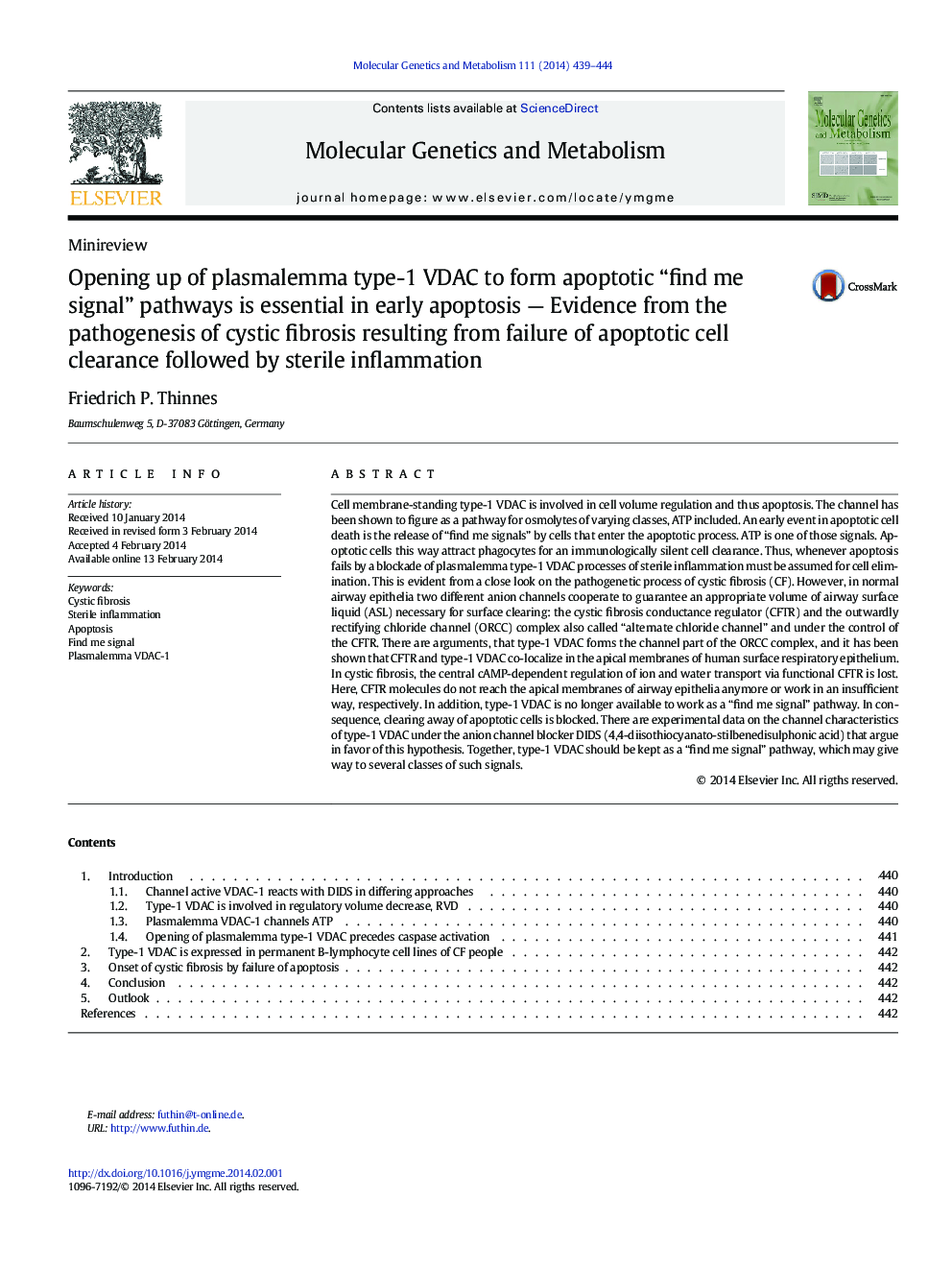| Article ID | Journal | Published Year | Pages | File Type |
|---|---|---|---|---|
| 10833615 | Molecular Genetics and Metabolism | 2014 | 6 Pages |
Abstract
Cell membrane-standing type-1 VDAC is involved in cell volume regulation and thus apoptosis. The channel has been shown to figure as a pathway for osmolytes of varying classes, ATP included. An early event in apoptotic cell death is the release of “find me signals” by cells that enter the apoptotic process. ATP is one of those signals. Apoptotic cells this way attract phagocytes for an immunologically silent cell clearance. Thus, whenever apoptosis fails by a blockade of plasmalemma type-1 VDAC processes of sterile inflammation must be assumed for cell elimination. This is evident from a close look on the pathogenetic process of cystic fibrosis (CF). However, in normal airway epithelia two different anion channels cooperate to guarantee an appropriate volume of airway surface liquid (ASL) necessary for surface clearing: the cystic fibrosis conductance regulator (CFTR) and the outwardly rectifying chloride channel (ORCC) complex also called “alternate chloride channel” and under the control of the CFTR. There are arguments, that type-1 VDAC forms the channel part of the ORCC complex, and it has been shown that CFTR and type-1 VDAC co-localize in the apical membranes of human surface respiratory epithelium. In cystic fibrosis, the central cAMP-dependent regulation of ion and water transport via functional CFTR is lost. Here, CFTR molecules do not reach the apical membranes of airway epithelia anymore or work in an insufficient way, respectively. In addition, type-1 VDAC is no longer available to work as a “find me signal” pathway. In consequence, clearing away of apoptotic cells is blocked. There are experimental data on the channel characteristics of type-1 VDAC under the anion channel blocker DIDS (4,4-diisothiocyanato-stilbenedisulphonic acid) that argue in favor of this hypothesis. Together, type-1 VDAC should be kept as a “find me signal” pathway, which may give way to several classes of such signals.
Related Topics
Life Sciences
Biochemistry, Genetics and Molecular Biology
Biochemistry
Authors
Friedrich P. Thinnes,
